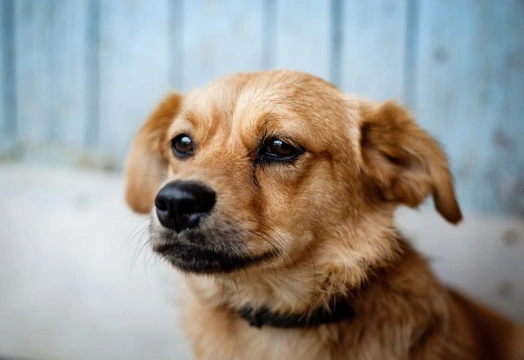
Canine neophobia - What is it and what problems does it cause?
If you have never heard the term “neophobia” before, you are probably not alone, but you are almost certainly familiar at least in passing with its explanation: Neophobia is fear of something new, or exposure to new things. In the dog, this problem usually presents itself as an out of proportion fear or anxiety response to situations, people or things that they have not encountered before, which is demonstrated by means of all of the classical canine signs of fear, such as the fight or flight response, and body language that indicates stress and being afraid.
Neophobic dogs are likely to be very hesitant at trying new things or getting outside of their comfort zone, and will often become anxious even before they come face to face with something new and potentially alarming. Added to this, once a dog that is neophobic has startled or become afraid, it will generally take them longer to calm down and return to normal once the fear stimulus has been removed or the dog realises there is no genuine source of fear.
Neophobia is a condition of the adult dog, and not one that is associated with puppies; puppies go through a developmental phase between the ages of around four and six months old where they will tend to display heightened fear responses to a wide range of stimulus as part of normal puppy development, but this is a passing phase, and not classed as neophobia.
So, if your dog does suffer from neophobia, what causes this, and what can be done about it? Read on to learn more.
Poor early socialisation
Socialisation is vital for puppies in order to learn about the world around them and appropriate interaction with people and other dogs, and also to learn by observation that new things are not generally a source of fear.
The most important window for socialisation in the puppy to begin is between the ages of twelve and sixteen weeks, which is when pups tend to be fearless and very open to exploring new stimulus. From sixteen weeks of age onwards, puppies tend to use their learned frame of reference to judge new things, and will naturally become more wary. After sixteen weeks of age, learning about new things becomes adaptive rather than reactive, and puppies that have not built up a good positive frame of reference by this time will tend to remain rather more wary throughout their lives.
Hereditary factors
Certain breeds of dog have a reputation for being rather more speculative and wary about new things than others, and may require significantly more socialisation than other dogs; for instance, in the case of traditional watchdog breeds. If extra effort is not put into exposing such dogs to new things in a safe, comforting environment when young, their natural wariness may become amplified as they get older, leading to a potential manifestation of neophobia.
Negative past experiences
Dogs that have a patchy history of being cared for in a supportive manner, or that are used to negative reinforcement or punishment may become neophobic, particularly if the dog in question has been repeatedly told off or punished for exploring and playing with new things. This in turn can cause a phobia of anything new, as new things and novel events may become associated with fear and bad things in the mind of the dog.
How can you help a neophobic dog?
If your dog appears to be neophobic or displaying some of the markers of neophobia for any reason, your first step should be to get an experienced dog trainer or canine behaviourist to assess your dog, in order to get a firm diagnosis that you can work with. From this point, there are several different approaches that you can take to deal with neophobia:
- Work on your dog’s socialisation intensely, as well as their exposure to new things. Ensure that you keep the environment that your dog is in safe, familiar, comforting and reassuring, and only introduce one new stimulus at a time. Desensitisation to new stimulus can be fairly time-intensive to fully achieve, but it is well worth it in the long run!
- Keep your dog to a clear routine and schedule, in order to permit them to feel safe and secure in their day to day living situation.
- Narrow down the types of stimulus that frighten your dog, and work on counter-conditioning your dog to them.
- Never push your dog outside of their comfort zone, but do not enable their fear either by being overly reassuring, ergo convincing your dog that their fear is legitimate.
- Work on your dog’s day today training and responsiveness; a well-trained dog will look to you for direction and be more willing to follow your lead in terms of stepping into the unknown without fear.



